In the previous newsletter we looked at cycle security. Being able to park your bike and know that it’s still going to be there when you come back, is an important factor in encouraging people to cycle. The fear of having your bike stolen is enough to put many people off cycling completely.
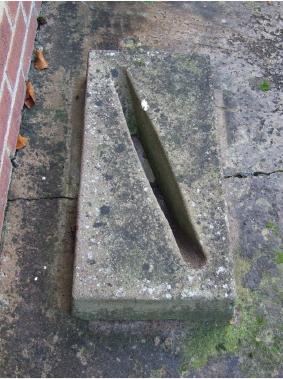
The good news is that cycle parking provision has improved dramatically over the past ten to fifteen years. We now accept the ‘Sheffield’ or hoop style parking stand as being the new standard, previously bike parking tended to be ‘wheelgrabber’ designs that held a bike by the wheels only. The worst of these were designs that were simply slots in concrete blocks that held a front wheel.
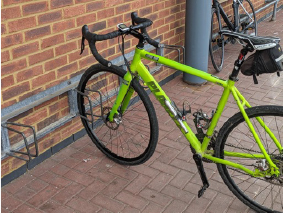
Whilst these stands were incredibly popular as they packed the maximum number of bikes into the minimum space, they were simply not secure as it was impossible to lock a bike frame to anything immovable. Also, by knocking a parked bike, it was much too easy to damage a wheel that was jammed into a stand.
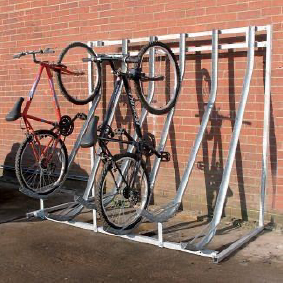
Generally, it looks as though most of such obsolete stands have now gone, although some do still exist and surprisingly they are still being supplied by various manufacturers today.
I’m aware of wheelgrabber stands at B&Q Reading (I’m sure that I can’t be the only person that cycles to B&Q…). But, if there are more of these dinosaur parking stands out there, please let us know.
The main types of stand that we now have are variations on inverted U-shaped metal hoops, known as a ‘Sheffield’ stand. These stands were developed in Sheffield with a simple yet brilliant design, originally made using sections of old gas piping, with two bends, concreted into the ground.
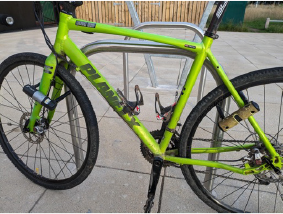
Ideally, stands should be around the height of a bike top tube, generally around 750mm high, with the sides of the stand around 700mm to 800mm apart, matching the seat tube and forks.
This enables the bike to be supported by the stand and the bike can then be securely locked to the stand. Both legs of the stand should be firmly fixed into the ground. Parking stands should also be placed on level ground, otherwise a bike will be running away from you whilst being parked.
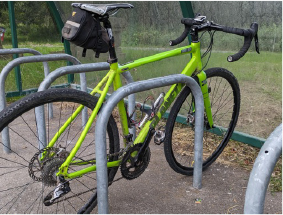
Stands should be spaced between 800mm to 1m apart to allow a bike to be securely locked to each side and for anyone to get easy access to their bike.
This allows for six parking stands, or parking for 12 bikes, in the space that would normally be used for one car. However, whilst this spacing is adequate for most bikes, this doesn’t provide for bikes with luggage attached, child seats, tandems, recumbents, cargo bikes, etc.
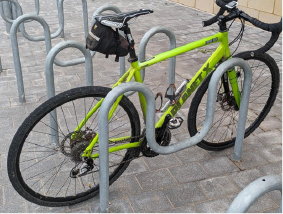
Therefore, some parking stands should have much wider spacing to allow for these bikes. Current advice is around 5% of total parking spaces should be provided for these bikes.
There are other variations on parking stands. These include M shaped stands that are designed to be more secure for bikes parked using two locks and for smaller bikes. Fin shaped stands don’t seem to have any advantage over standard Sheffield stands, other than possibly aesthetics.
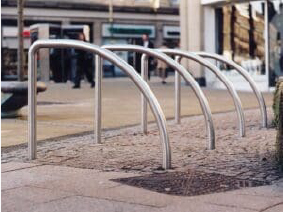
Whilst it may seem like nit-picking, the dimensions of cycle parking stands are important. Stands that are too tall, too short or too wide mean that bike locks don’t easily fit around the bike frame and parking stand. Stands which are the wrong size just make it that bit more difficult to securely park your bike; this is annoying when standard sizes and dimensions are available.
Cycle parking for anything other than short stay use should ideally be undercover. This does though need to be balanced against being in full view of everyone that is passing, as natural surveillance is a deterrent to potential thieves. In many places, cycle parking is fitted into tucked away locations or leftover spaces that can’t usefully be used for anything else. In such circumstances, it may be worth checking where other cycle parking is available.
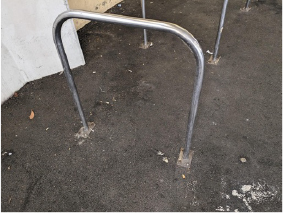
It may seem obvious, but avoid any cycle parking stands that are loose or wobble. This could mean the stand is not secure, which would allow a thief to more easily steal a bike. Also, avoid any stands which look damaged. There have been instances where thieves have used an angle grinder to cut through a parking stand, which has then been fixed with tape, which allows the stand to be bent open and for a bike to be stolen easily.
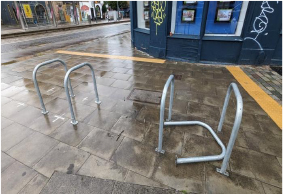
Whilst most parking stands are secured into the ground, it’s also worth checking whether the stand is bolted into the ground, which is far less secure than being concreted in. A recent example from Edinburgh revealed thieves unbolted newly installed cycle parking stands to steal bikes. Although I’m not aware of this happening here, the Oracle and around Reading station have cycle stands which are bolted down.
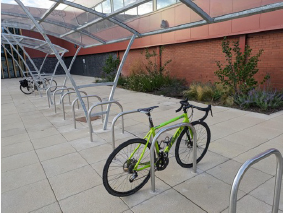
At the risk of sounding gloomy, the reason for highlighting this is that insurance companies will only pay out for a stolen bike if it has been securely locked to an immovable object. There is therefore a risk that any claim could be affected if the bike stand is damaged or not secure.
For those with time on their hands during these dark winter evenings, Department for Transport cycle design guidance Local Transport Note (LTN)1/20, published in July 2020, has a whole section on cycle parking…. https://www.gov.uk/government/publications/cycle-infrastructure-design-ltn-120
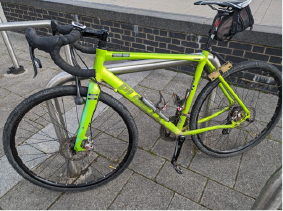
We would be interested in your thoughts about cycle parking around Reading. What works well and what doesn’t? Do you have suggestions for new or improved cycle parking? Should there be more single parking stands rather than large blocks of stands around the town? Have you had a bike stolen from somewhere that you thought was secure?
The recently installed cycle parking at Palmer Park sports stadium demon-strates a good example of well designed and implemented cycle parking: the stands are the correct size, they are securely fitted into the ground, there is plenty of space between stands, they are not tucked away from natural surveillance and are undercover. Simple but effective.
Tony Carr



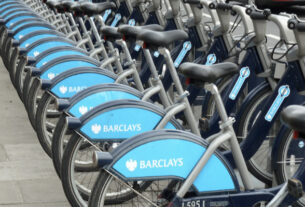
I find cycle stands are invariably spaced too closely together; eg the cycle stands outside Nisbets Catering, at the corner of Friar St and Greyfriars Rd (located in a puddle/ice collection area). This recommendation of 800 – 1000 mm seems too small a gap to me, and the suggestion that 5% of them should be more widely spaced, surely amounts to nothing: if there are six stands in the space occupied by one standard car, you can bet 5% of 6 will be rounded to, er… 0. If you’re going to B&Q, surely you can be expected to have a loaded bike, so shouldn’t they ALL be more widely spaced? And a similar thought would apply to many positions in the town centre.
Concerning the shape of the Sheffield stands, I’m not sure the inverted U design is so wonderful. I think those “n” type stands are potentially better as they allow bikes of different length to be locked using two locks, each one going round the stand, bike frame and bike wheel.
Another thing is how close they’re situated to the road. I think the ones on Friar St are too close. to the kerb. If I lock my bike through the stand, frame, wheel and one of the cranks (thus minimising any gaps where someone can jemmy my lock), the bike has to be positioned very close to, or even over the edge of the kerb, or, if I position it the opposite way round, it juts into the pedestrian area. And, when I lock it this way, the standard inverted U design is then useless for securing the front wheel with the frame as well as the stand.
As with so much cycling infrastructure, I don’t think cyclists have much involvement in the design: it’s provided on a “best-efforts” basis by non-cyclists for cyclists, rather than by people who have any practical experience of what cyclists need.
I think they should not use hollow tubing, I have seen some cut. A thinner solid metal like galvanised steel might be stronger and allow more room for locks and reach considering there could be two bikes locked to one stand. The extra 5% spacing may be sufficient if you had to stands close to each other for two bikes either side. I do not think it is practical for two bikes a lot of the time to be locked to one stand considering cargo bikes and such. Also by far the best design is the double T shape or pie sign in mathematics shape because even if the ground tube is compromised you can double lock to the top tube which would make any would be thief have to either break two locks or two tubes provided you locked to the top tube and down tube of the rack which is what I do, I feel safer when I use these racks and locking method and think they are by far the safest and best.
The Cycle Stands at Lidl Horncastle are quite good and under cover
The only problem is the roof is too low as its rounded shape the further you push your bike in the lower you have to duck. Always wear a cycle helmet when using this park.